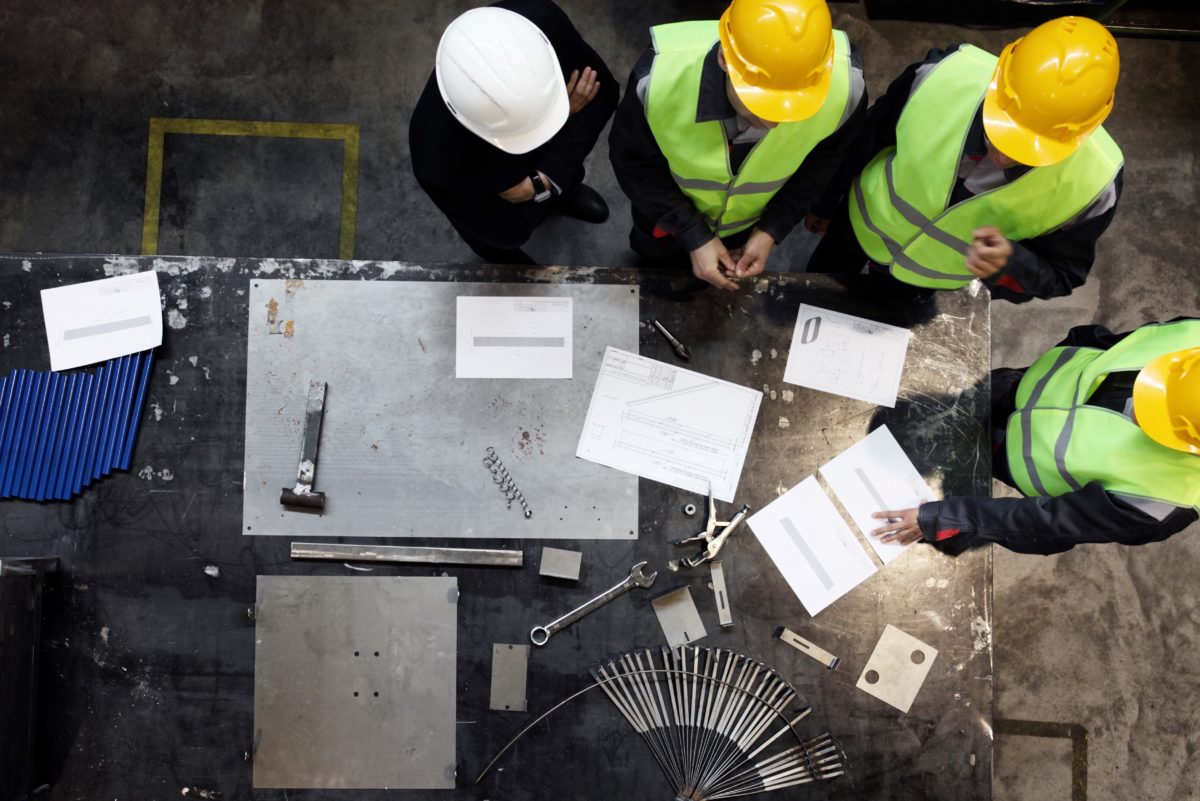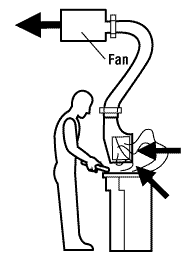Process Control

Process control involves changing the way a job activity or process is done to reduce the risk. Monitoring should be done before and as well as after the change is implemented to make sure the changes did result in lower exposures.
Examples of process changes include:
- Use wet methods rather than dry when drilling or grinding. The wet method means that water is sprayed over a dusty surface to keep dust levels down or material is mixed with water to prevent dust from being created.
- Use an appropriate vacuum or wet method instead of dry sweeping (e.g. with a broom) to control dust and reduce the inhalation hazard. Note: Never use a regular "household" vacuum cleaner, especially when cleaning toxic material such as lead or asbestos. Use a vacuum specifically designed for industrial workplaces and be sure to use appropriate filters, etc.
- Use steam cleaning instead of solvent degreasing (but be sure to evaluate the potential high-temperature hazard being introduced, such as heat stress).
- Use electric motors rather than diesel ones to eliminate diesel exhaust emissions.
- Float balls on open-surface tanks that contain solvents (e.g. degreasing operations) to reduce solvent surface area and lower solvent loss.
- Instead of conventional spray painting, try to dip, paint with a brush, or use airless spray paint methods. These methods will reduce the amount of paint that is released into the air.
- Decrease the temperature of a process so that less vapour is released.
- Use automation - the fewer workers have to handle or use the materials, the less potential there is for exposure.
- Use mechanical transportation rather than manual methods.
Enclosure and Isolation
These methods aim to keep the chemical "in" and the worker "out" (or vice versa).
An enclosure keeps a selected hazard "physically" away from the worker. Enclosed equipment, for example, is tightly sealed and it is typically only opened for cleaning or maintenance. Other examples include "glove boxes" (where a chemical is in a ventilated and enclosed space and the employee works with the material by using gloves that are built-in), abrasive blasting cabinets, or remote-control devices. Care must be taken when the enclosure is opened for maintenance as exposure could occur if adequate precautions are not taken. The enclosure itself must be well maintained to prevent leaks.
Isolation places the hazardous process "geographically" away from the majority of the workers. Common isolation techniques are to create a contaminant-free booth either around the equipment or around the employee workstations.
Ventilation
Ventilation is a method of control that strategically "adds" and "removes" air in the work environment. Ventilation can remove or dilute an air contaminant if designed properly. Local exhaust ventilation is very adaptable to almost all chemicals and operations. It removes the contaminant at the source so it cannot disperse into the workspace and it generally uses lower exhaust rates than general ventilation (general ventilation usually exchanges the air in the entire room).
Local exhaust ventilation is an effective means of controlling workplace exposures but should be used when other methods (such as elimination or substitution) are not possible.
A local exhaust ventilation system consists of these basic parts:
- A hood that captures the contaminated air at the source;
- The ductwork that carries the contaminated air away from the source;
- A fan draws the air from the hood into the ducts and removes the air from the workspace.
- Air cleaning devices may also be present that can remove contaminants such as dust (particulates), gases and vapours from the air before it is discharged or exhausted into the environment (outside air), depending on the material(s) being used in the hood.

The design of a ventilation system is very important and must match the particular process and chemical or contaminant in use. Expert guidance should be sought. It is a very effective control measure but only if it is designed and maintained properly.
Because contaminants are exhausted to the outdoors, you should also check with your local environment ministry or municipality for any environmental air regulations or bylaws that may apply in your area.